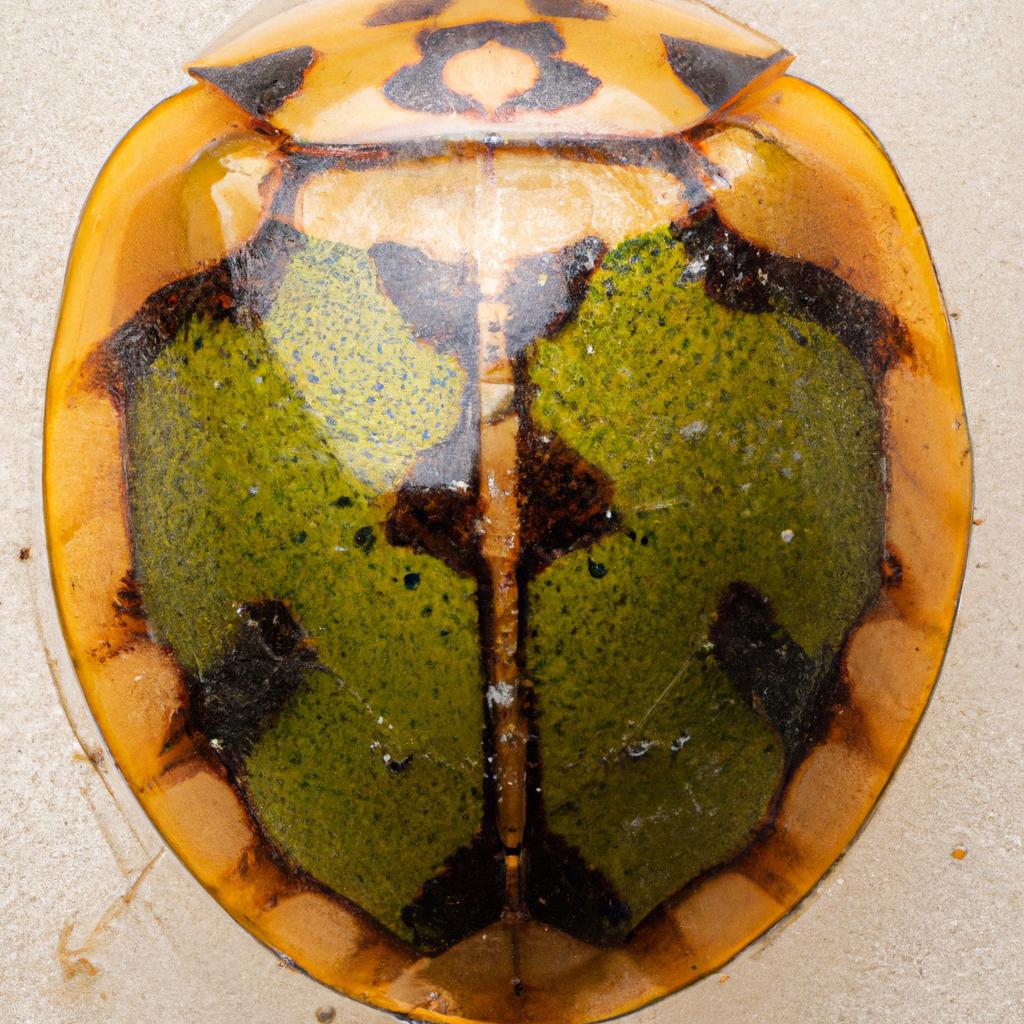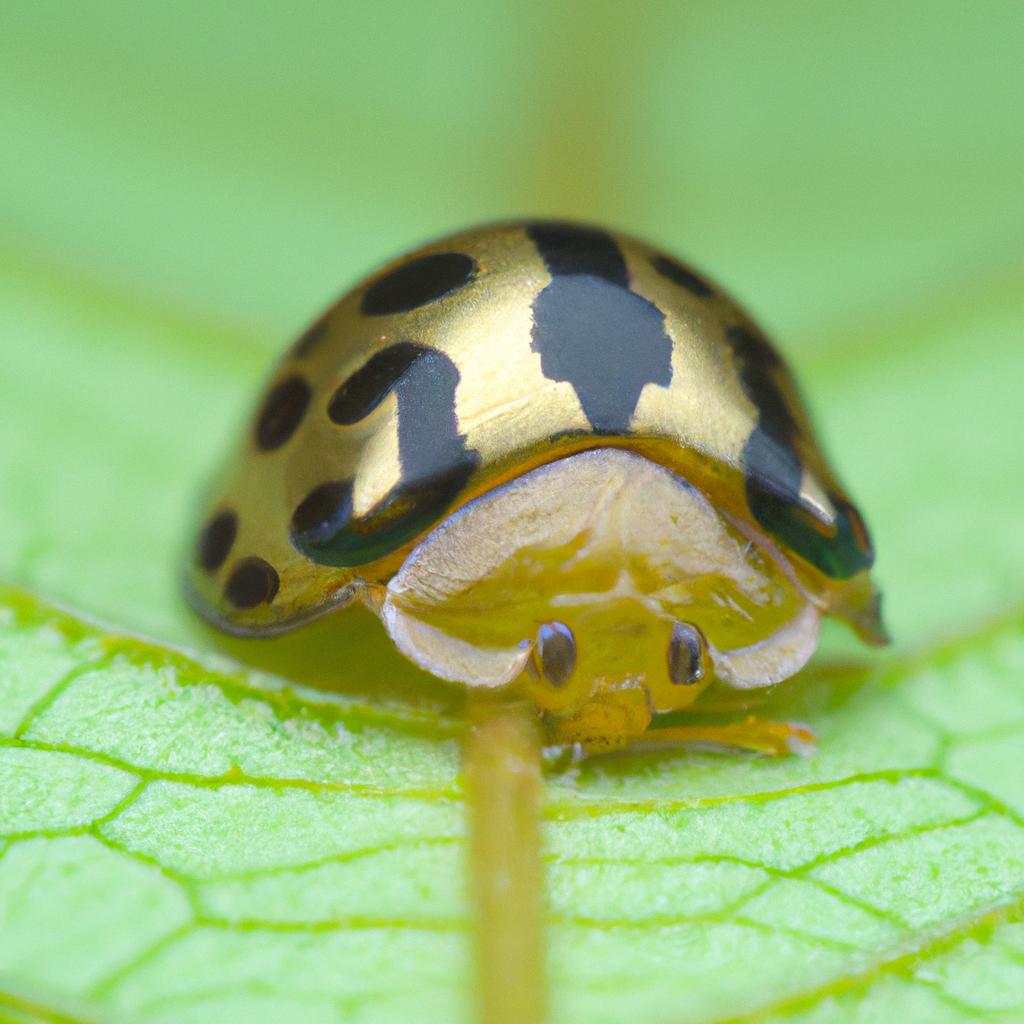
The tortoise beetle, belonging to the Chrysomelidae family, is an insect renowned for its distinctive shell, reminiscent of a tortoise. With its captivating appearance and intriguing habits, this insect has captured the interest of many. In this article, we will delve into the physical characteristics, habitat, life cycle, economic significance, and conservation status of the tortoise beetle.
A Closer Look at Physical Appearance
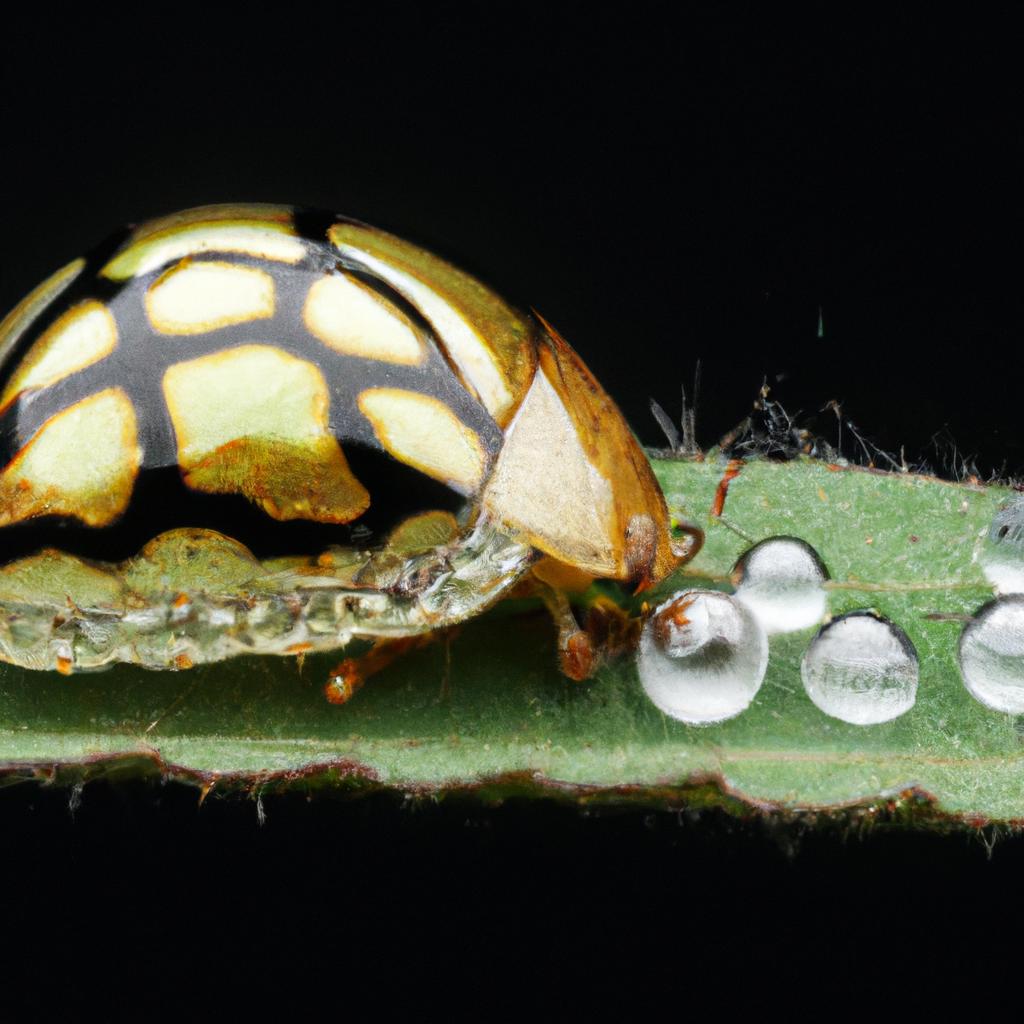
We find the tortoise beetle to be a diminutive insect, measuring between 2 and 10 millimeters in length. It possesses a rounded body structure with a flat upper surface, and its coloration varies according to the species. Some exhibit lustrous, metallic hues, while others display more subdued, earth-toned shades. However, the most striking feature of the tortoise beetle is its shell, called an elytra. Serving as a hardened protective covering, the transparent elytra shields the beetle’s wings and body.
This unique shell allows the beetle’s body colors to shine through, creating an illusion of color change in motion. Numerous predators find it challenging to locate the tortoise beetle due to this shell and struggle to grasp or bite it because of its round shape.
Habitat and Distribution Insights
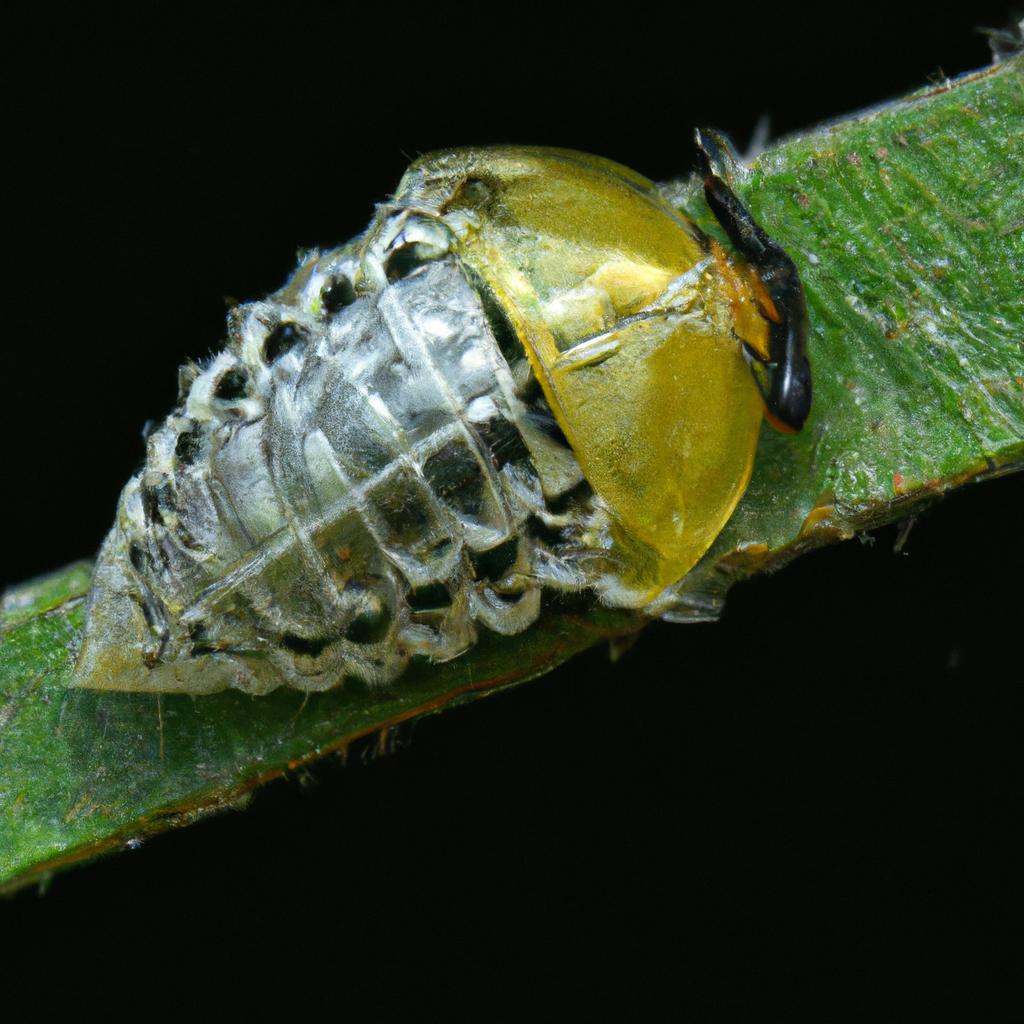
The tortoise beetle thrives in various habitats across the globe, including forests, grasslands, and wetlands. Although predominantly found in tropical regions, it also occupies temperate zones. This beetle species sustains itself by feeding on an array of plants, from corn and soybeans to morning glories and bindweed, making it an agricultural concern.
With an expansive distribution, the tortoise beetle has established itself in North America, South America, Africa, and Asia. While some species are endemic to specific regions, others possess a more extensive range. Thanks to its adaptability across diverse environments, the tortoise beetle has flourished in numerous parts of the world.
An Intricate Life Cycle and Astute Behavior
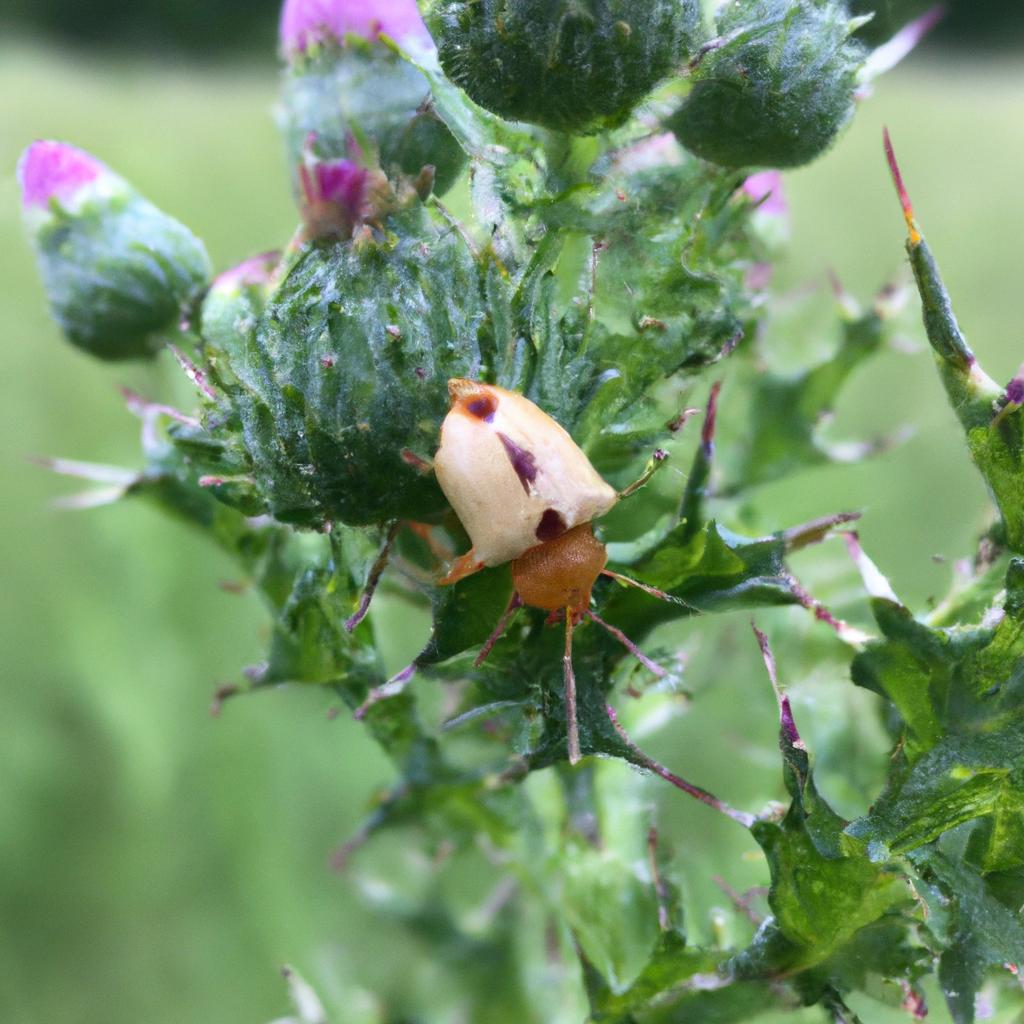
The tortoise beetle undergoes complete metamorphosis, progressing through four distinct stages in its life cycle: egg, larva, pupa, and adult. Adult females deposit their eggs on the undersides of leaves, where they later hatch into larvae. These larvae feed on plant foliage until they reach the pupal stage, where they form a cocoon-like structure. Upon emerging from the pupa, the adults reenter the cycle.
Noteworthy for their captivating behavior, tortoise beetles possess various defense mechanisms. When faced with danger, they can change color dramatically, transforming their transparent shell into a vivid yellow or red hue by releasing a fluid. This sudden transformation disorients predators, providing the beetles an opportunity to escape. Additionally, the tortoise beetle can feign death by curling up motionlessly until the threat passes.
Economic Significance and Conservation Efforts
The tortoise beetle plays a vital role in ecosystems as it regulates plant populations by consuming plant matter. However, it can also become a pest in agriculture, damaging crops. Although the economic impact of the tortoise beetle on agriculture remains understudied, monitoring populations and implementing control measures when necessary are crucial.
Traditional medicine employs the tortoise beetle in various remedies, including those for respiratory infections and fever. Some cultures even associate the beetle with protecting against evil spirits. Nevertheless, the effectiveness of these treatments lacks scientific validation, and the utilization of the tortoise beetle in traditional medicine may contribute to its population decline.
When it comes to its conservation status, limited research leaves many tortoise beetle species underdefined. However, habitat destruction and pesticide usage are known culprits behind the decline of some species. Furthermore, the utilization of the tortoise beetle in traditional medicine further threatens its survival.
Conservation initiatives focus on safeguarding the tortoise beetle’s habitat and promoting alternative pest control methods in agriculture. Education and awareness programs also aim to reduce the demand for the beetle in traditional medicine. Monitoring the tortoise beetle population and taking action to ensure its protection are vital, considering its significance in ecosystems, as well as its captivating and exceptional nature.
In Conclusion
The tortoise beetle stands as a captivating insect, showcasing a unique shell and remarkable behavior. While it fulfills essential roles in ecosystems, it can pose challenges in agriculture and falls victim to habitat loss and pesticide usage. Conservation efforts, including population monitoring and protective measures, must persist. The tortoise beetle serves as a mere glimpse into the abundant and enchanting world of insects, and TooLacks takes pride in revealing insights about various aspects of nature, including animals and gardening. Visit TooLacks to discover more intriguing content.
